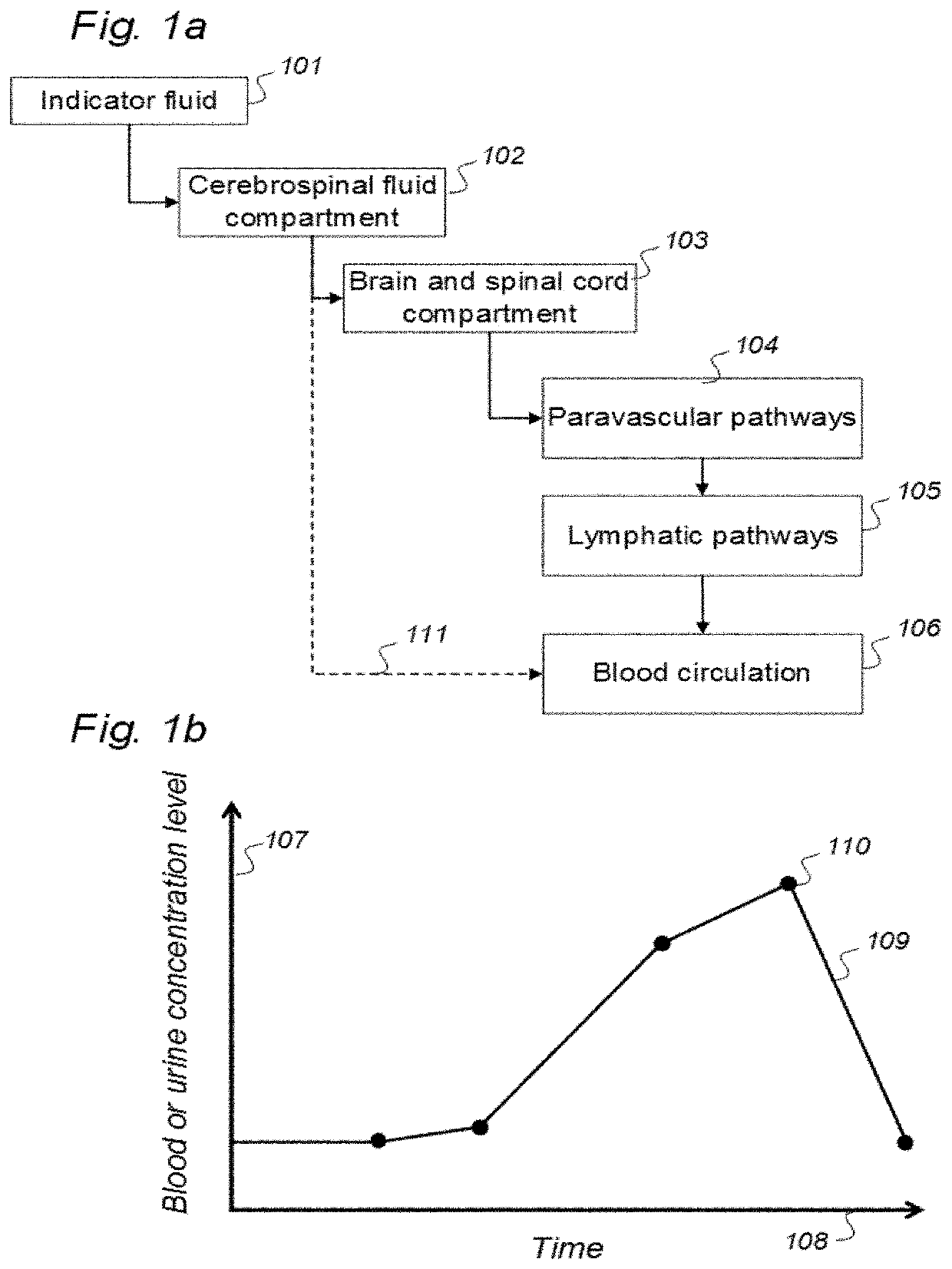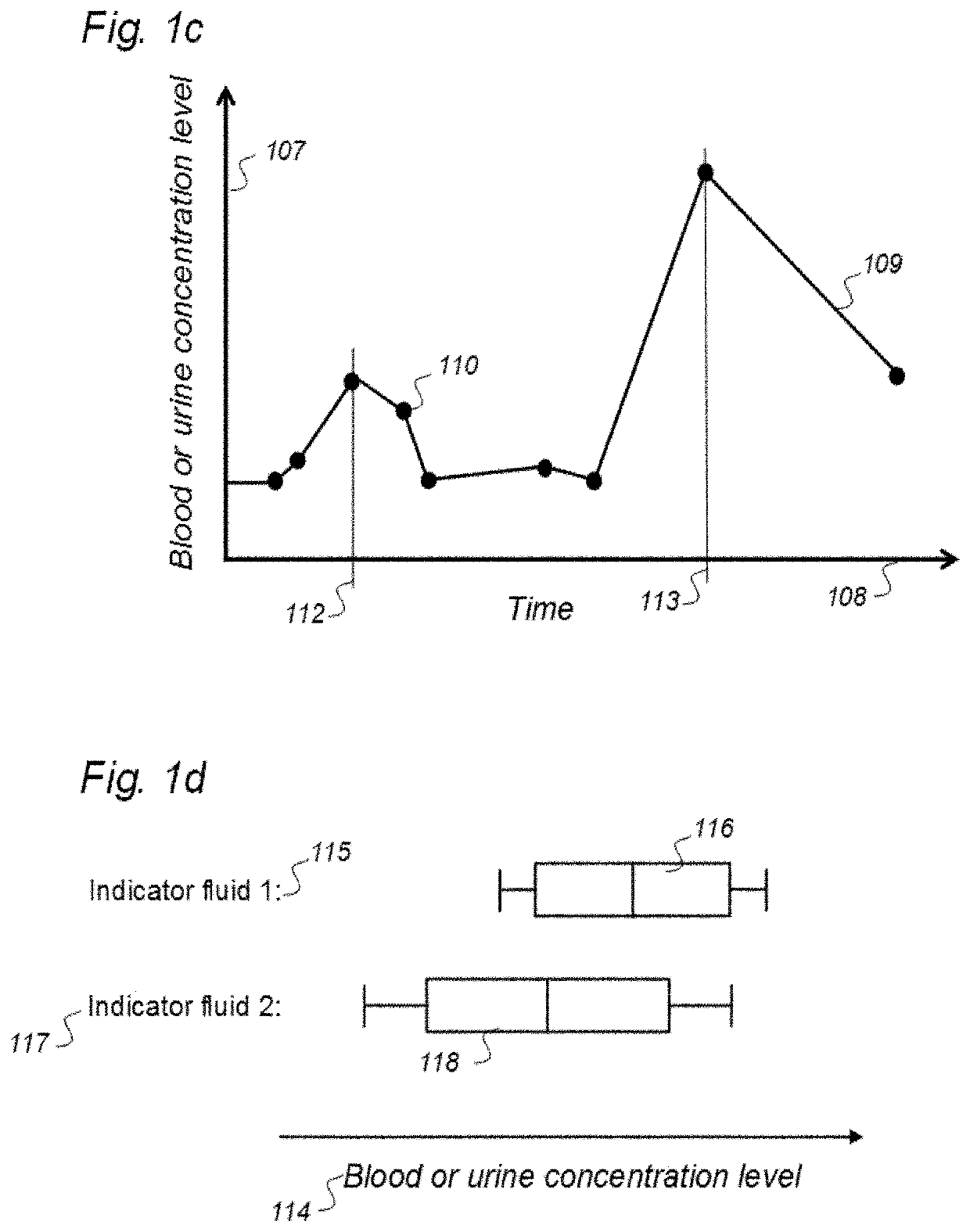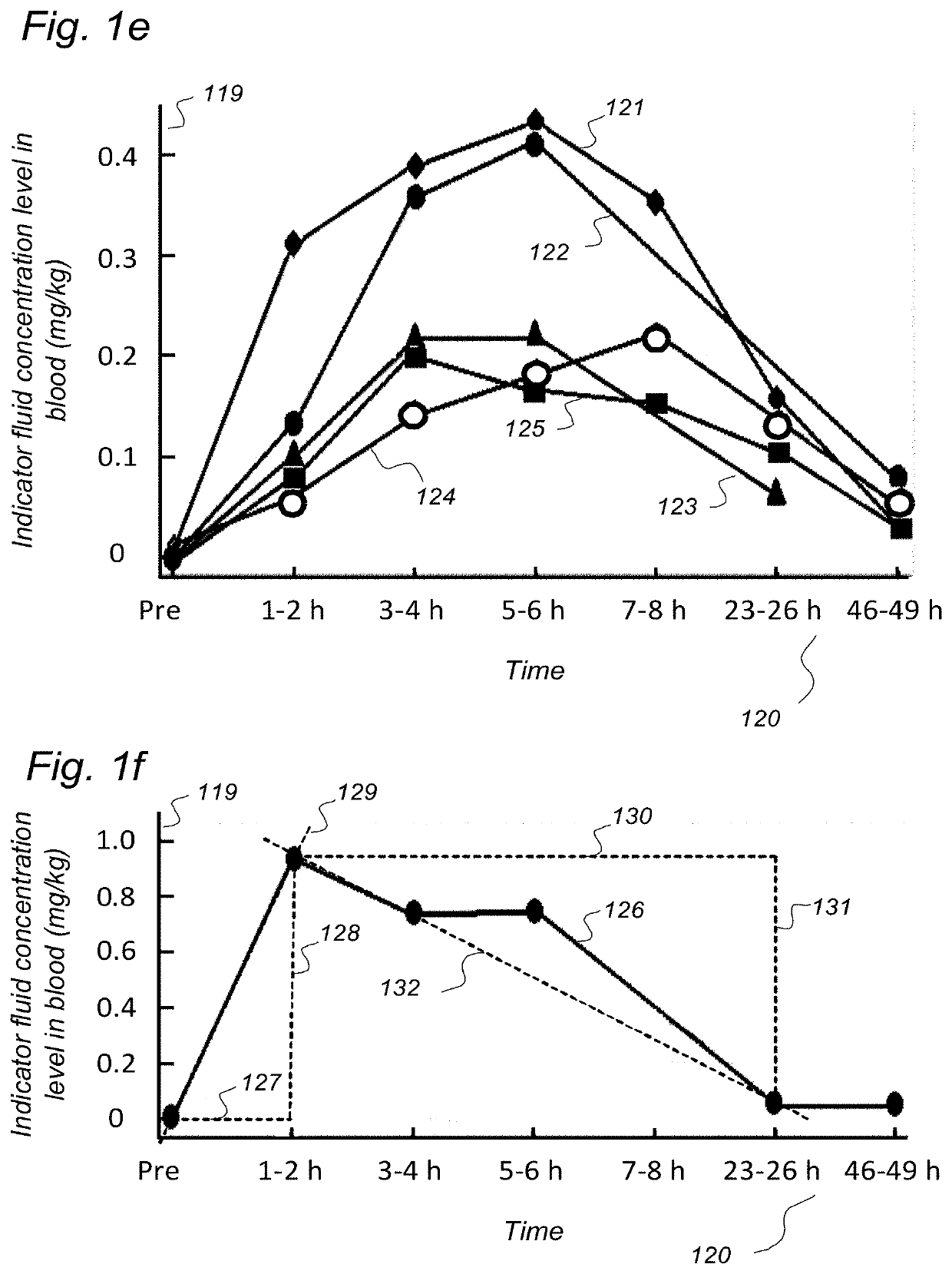Indicator Fluids, Systems, and Methods for Assessing Movement of Substances Within, To or From a Cerebrospinal Fluid, Brain or Spinal Cord Compartment of a Cranio-Spinal Cavity of a Human
a technology of indicator fluids and cerebrospinal fluids, which is applied in the direction of diagnostics, sensors, and fluorescence emission detection. it can solve the problems of low accuracy, low accuracy, and low accuracy of measurement results
- Summary
- Abstract
- Description
- Claims
- Application Information
AI Technical Summary
Benefits of technology
Problems solved by technology
Method used
Image
Examples
example # 1
Example #1
[0728]Alzheimer's disease and dementia in general. The present invention provides for establishing information about the ability of movement of molecular substances within and from the cranio-spinal cavity in early Alzheimer's disease, or in individuals at risk of Alzheimer's disease, and other variants of dementia. The entorhinal cortex has an important role in cognition and dementia development. Changes within the entorhinal cortex are seen early in dementia. For example, the grid cells, which were described by the 2014 Nobel Prize recipients from NTNU in Norway, are in the entorhinal cortex. The present invention explores paravascular transport within this region as a function of contrast agent within nearby CSF compartment, and as a function of values from the extra-body device. Early changes in paravascular transport within this area may be seen in early dementia development. Hence, impaired paravascular transport within the various layers of the entorhinal cortex may...
example # 2
Example #2
[0729]Brain tumors. The present invention provides for an alternative way of assessing brain tumor invasion. This is particularly relevant for gliomas in areas of the brain not readily detected with current MRI techniques. There are no reliable methods for in vivo characterization of spread of glioma cells. Conventional MRI may present with normal signals though tumor cells are present. Glioma cells typically spread along the outside of the vessels of the brain and within the extracellular space. Diffusion techniques have only revealed alterations in limited areas close to the tumor. Conventional techniques apply intravenous contrast agents, which are restricted to the vascular (intra-vascular) compartment because of the BBB, and only distributes in local, extra-vascular spaces when the BBB is disrupted by tumor. With the present invention (e.g. Aspect 5), we provide a method that may reveal events on the outer side of the vessels. The present invention may reveal spread o...
example # 3
Example #3
[0730]Multiple sclerosis and inflammatory brain disease. The present invention provides for a method of macroscopically imaging the integrity of paravascular fluid spaces in demyelinating disease, which is a perivascular inflammation. This seems to be a main aspect of the pathogenesis of the disease. It is expected that Gd-based contrast agents will facilitate a signal drop in T1 weighted images. Attaching compounds with affinity for inflammation cells to an indicator fluid, such as an MRI contrast agent, may cause SU to increase in areas of inflammatory cell invasion. By this method, assessment of disease load and disease activity may be provided.
PUM
 Login to View More
Login to View More Abstract
Description
Claims
Application Information
 Login to View More
Login to View More - R&D
- Intellectual Property
- Life Sciences
- Materials
- Tech Scout
- Unparalleled Data Quality
- Higher Quality Content
- 60% Fewer Hallucinations
Browse by: Latest US Patents, China's latest patents, Technical Efficacy Thesaurus, Application Domain, Technology Topic, Popular Technical Reports.
© 2025 PatSnap. All rights reserved.Legal|Privacy policy|Modern Slavery Act Transparency Statement|Sitemap|About US| Contact US: help@patsnap.com



